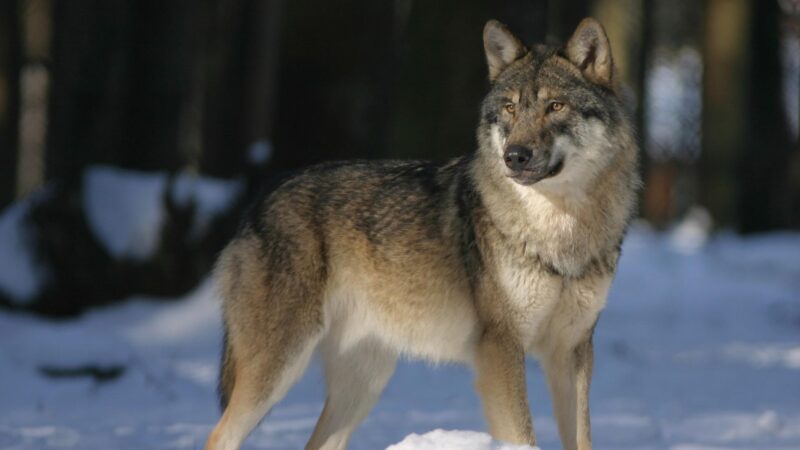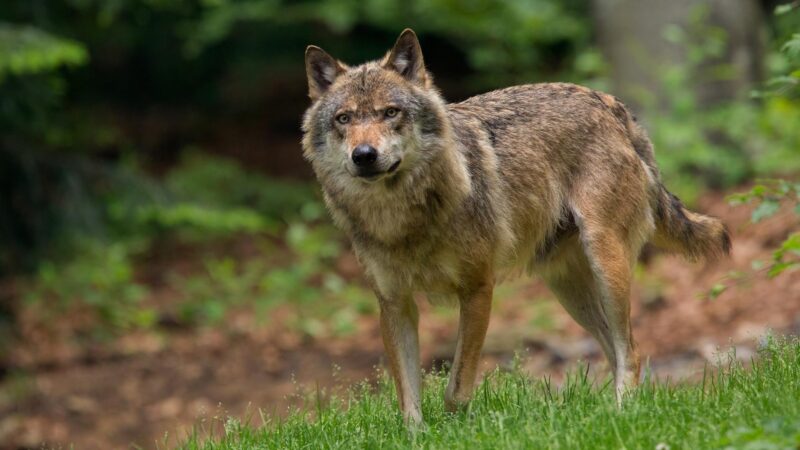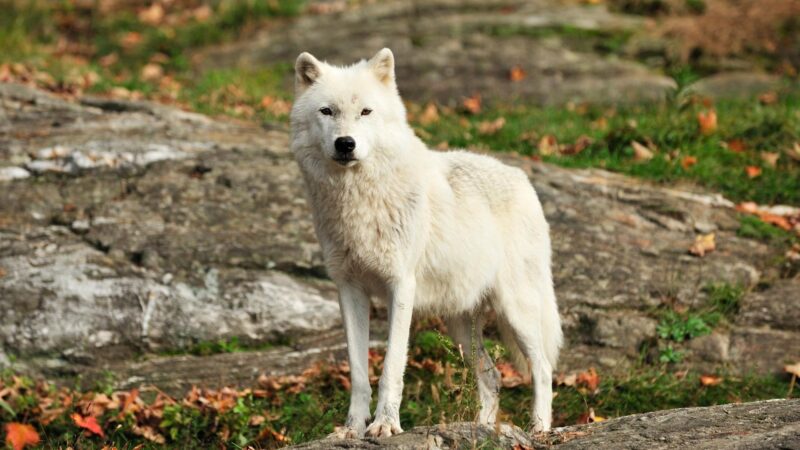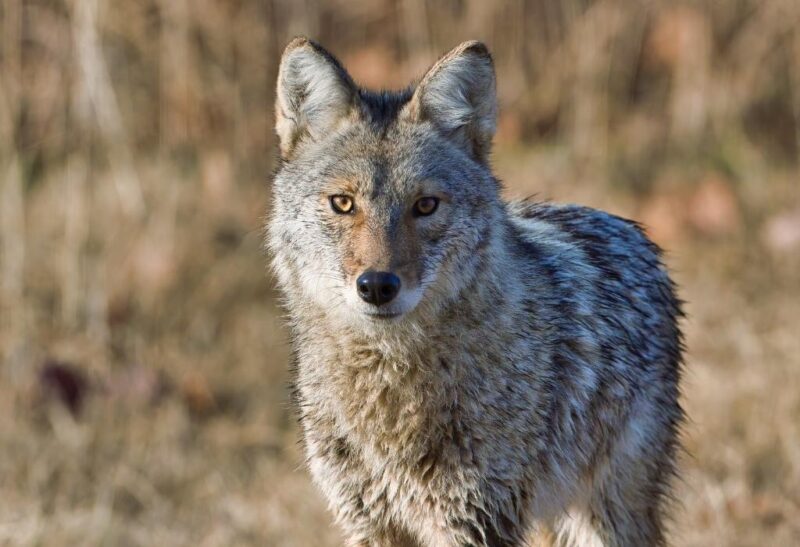It’s common knowledge that dogs and wolves are related. Dogs are recognized as man’s best friends and were believed to be domesticated between 15,000 and 40,000 years ago.
Paleogeneticists and zooarchaeologists pinpointed that it occurred in the Last Glacial Maximum. It happened in some regions of Asia and Europe.
Can you tame a wolf? Unfortunately, wolves can’t be tamed by humans, although they’re the ancestors of domesticated dogs. Domestication is a long process and continuum with emerging variations as quoted by Gregor Larson of the University of Oxford. Humans weren’t able to domesticate or tame wolves, so they remain as threats since the earliest time and even until now.
When men were hunters and gatherers in the Paleolithic period, they competed with wolves when it came to meat supply as they were both carnivores.
It’s the reason why men in the past were offensive to wolves. In the present, some men still have the urge to kill wolves, specifically ranch owners. Wolves destroy ranches and farms as they attack and consume livestock.
For these reasons, it just shows that human civilization contributes a lot to the genetics of animals and insects through domestication. To learn further why wolves can’t be tamed, read on.
Table of Contents
Why Haven’t Wolves Been Domesticated?

The answer to this question will lead to the domestication and taming of dogs. Wolves are dogs’ ancestors. Therefore, some wolves remain as they are in the wild while others went through genetic modification.
How did it happen since men and wolves have a competition in going after prey? Carnivore species can engage in a sympatric relationship which is established by carnivores. One species has the nature to leave carcasses for other species.
There are no records to exactly show how men turned some wolves into domesticated dogs. Still, experts and authorities have two substantial hypotheses. These could have happened in the late Mesolithic or Paleolithic when men gathered and hunted for food.
Wolves, even in the said period, are scavengers. Their activities were not interrupted, so they became comfortable around men and vice versa. The second hypothesis focused on the result of men’s tolerance to scavenging around them.
As wolves were not distant from them anymore, men realized the benefits of having them around. These animals are helpful as they give warnings if there’s an incoming danger.
They can also help humans to track and catch prey. So, humans began to give them special treatment because of the benefits they gain from these animals. Some wolves were not domesticated as they weren’t attached to humans.
Can Wolves Be Tamed?

Wolves can’t be tamed because they live in packs and hunt their food without depending on humans. In a study that checked prosocial behavior, an action that allows others to gain benefits.
This behavior is important to domestication as it’s a sign of cooperation. Hence, scientists hypothesized that dogs are more social than wolves before the study was conducted. This view is also based on the result of prior studies.
However, the result surprised them. It came out that wolves are more prosocial than dogs because they deliver more food to the members of their pack. On the other hand, dogs failed to bring food to their pack members.
Dogs showed prosocial tendencies in previous studies. This happens because of training and encouragement from their owners.
Wolves have this prosocial behavior as it’s their nature to be in a pack where they practice tolerance and generosity towards each other.
Therefore, wolves don’t rely on humans but create their group. They don’t follow human orders as they only care about their welfare.
For example, they prey on the livestock while dogs watch out for any attackers of animals that men take care of.
What Is Domestication?

You must know that being tamed is different from domestication. Some wild animals can be domesticated but not tamed. It means that men can have them as pets, but these animals can’t let go of their natural behavior.
Some examples of this are the Spanish bull and chickens. These animals benefit from the care given to them by men, but they still can attack. The bull with its horns and chickens can peck for a defense mechanism.
Domestication occurs through genetic modification linked to diet and behavior. You can see how the diets of dogs and their wolf ancestors differ.
Wolves remain carnivorous while dogs turn into omnivorous just like their human companions. Additionally, dogs’ genomes began to produce proteins that are incorporated with fat and starch metabolism.
In the case of behavioral change in domestication, foxes that were grown in Russian laboratories are great examples.
They behave differently from the ones in the wild. These foxes are like dogs that wag their tails, and they’re fine with petting.
However, it took 40 years for scientists to produce domesticated foxes. So, it’s safe to say that domestication is an ongoing process that takes a lot of time to instill diet and behavioral changes.
The Relationship Between Wolves and Humans

The relationship between wolves and humans dated back 35,000 years ago resulting in the domestication of dogs. Humans were hunters and gatherers in the Paleolithic era.
They make wolves their hunting companions and spiritual partners. It happened because men and wolves are both scavengers and cursorial hunters.
The similarities between men and wolves in the aspects of the social and ecological match are undeniable.
That’s why they lived together in the past. It must not be overlooked that they share the same mentalities in terms of family or group bonds. In their groups, both of them have leaders and subordinates.
Are Wolves Similar to Dogs?
They’re both canids, but they differ in several ways. First of all, they have different appearances, but there are dog breeds that look like wolves namely Alaskan malamute, Siberian husky, and German shepherd.
But their diets are not the same, as wolves are exclusively carnivores while dogs are omnivores.
In the past, wolves lived with humans as they could both benefit from each other. It’s not only dogs that are domesticated by men.
Wolves have been domesticated in the past too, but they’re not tamed like dogs. Furthermore, dogs are trained to follow humans’ orders. This is possible since they understand human gestures better than any other animals.
Humans and dogs also share emotional connections, whereas this characteristic is missing among wolves.
Susan Perry, a neurologist, points out that both humans and dogs have special brain neurons or mirror cells. So, humans don’t only pass movements to their dogs but feelings as well.
Frequently Asked Questions
How Do You Fight a Wolf?
You can use pepper spray, rocks, limbs, poles, and noisemakers to fight a wolf. Firearms are fine as long as you can handle these tools and they’re allowed in your area.
How Do You Bait a Wolf?
To catch a wolf, you can start making fawn bleats or wails that seem to be coming from a distressed rabbit. You can use an electronic device that emits sound to get the wolf’s attention.
Baits for wolves can be in the form of meat or attractant in a bottle. Put them in the place where you intend to trap this animal. If it’s allowed, you can shoot it when it gets into your bait.
What is Wolf Bait?
Based on the definition of Urban Dictionary, wolf bait refers to someone who pretends to be vulnerable to attract predators.
But the truth is that the person turns the predator into prey. To simplify, it’s when a person acts weak, but instead, he or she can destroy the other person.
What to Do if You See a Wolf?
Here are the things that you have to do when you see a wolf:
- Don’t try to run but face the wolf with aggressiveness like clapping your hands or yelling if ever it approaches you. Maintain eye contact with the animal.
- If you’re not alone at the time when the wolf is present, you have to position yourselves back to back as you move slowly away from it.
- As you move slowly, you have to maintain aggressiveness.
- When the wolf chooses to attack, fight with what you have, like rocks, sticks, or fishing rods. Be prepared and take pepper spray or poles with you when doing outdoor activities. You may use horns as well. If you’re capable, you can use firearms.
- It’s also helpful to climb a tree to avoid a wolf as it can’t climb.
Has Anyone Been Killed by a Wolf?
There’s no documented case that a wolf killed a person in North America from 1900 to 2000. In 2002, human-wolf interactions in Canada and Alaska, where a total of 60,000 wolves live, caused 16 cases of wild wolves that bite humans. Six of them are severe, but they’re not fatal.
However, there are reports that some people are killed by wolves. In 2005, it happened to a Canadian man, and in 2010, a woman who was jogging in Alaska’s remote area was also killed.
There are fatality cases in other parts of the world. Rabid wolves did it, and they got rabies from foxes, raccoons, skunks, and bats. Generally, wolf attacks happen when these animals are provoked.
Why are Wolves Hated?
Wolves are hated because they don’t only prey on the livestock of farmers and ranchers, but they can attack humans.
Summary
Unlike in the past, wolves no longer live with humans in the same shelter or area. Dogs, the wolves’ domesticated and tamed version, are the ones that are beside men nowadays. Many wild animals are being domesticated and made as pets these days. Since wolves are ferocious, men don’t attempt to keep them as pets.
List of Sources
Serpell, J. A. (2021). Commensalism or Cross-Species Adoption? A Critical Review of Theories of Wolf Domestication. Frontiers in veterinary science.
Lahtinen, M., et al. (2021). Excess protein enabled dog domestication during severe Ice Age winters. Scientific Reports.
Kotrschal, K. (2018). How Wolves Turned into Dogs and How Dogs Are Valuable in Meeting Human Social Needs. Purdue University.
Hunter, P. (2018). The genetics of domestication. EMBO Reports.
Living With Wolves. Alaska Department of Fish and Game.
